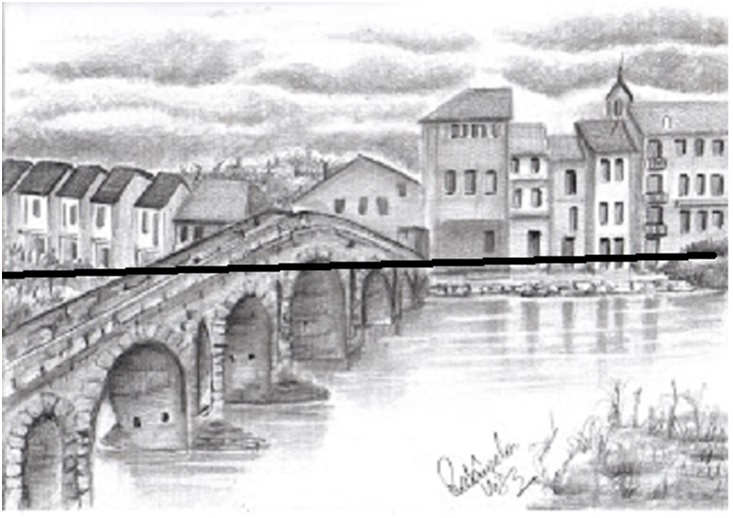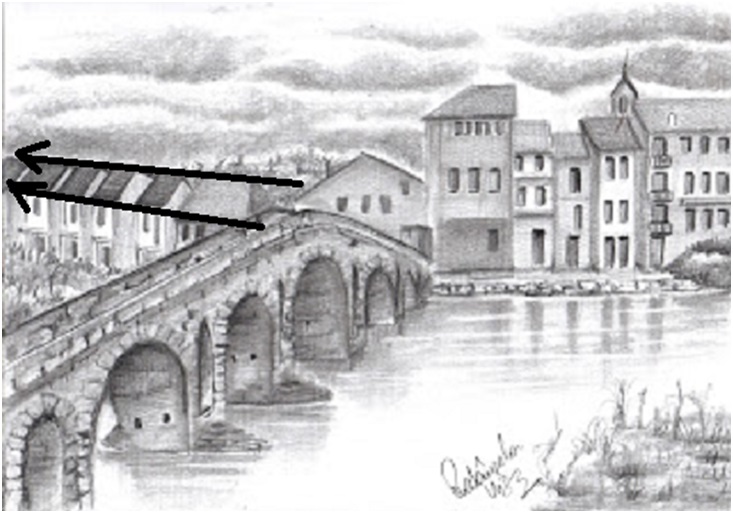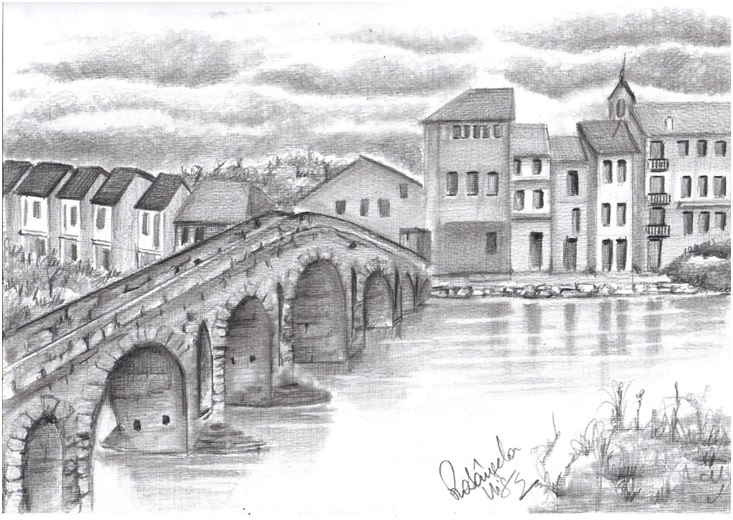
Bridge in Santiago
Do not you
A dream coming true.
Will
No way marked.
You are the owner of all paths
Just be a presence
Invisible silent presence
All things await the light
Not saying that await you
Without knowing that there is
All things wait for you
Without talking
Without talking.
(MEIRELES, 1995, XXIII)
Step by step 12 of how to draw
Even though our paths are lonely crowds filled the streets of large cities, or the cozy havens around the world, is this our way. To slow it down, just that for him crosses the poetry. It may be that she does not arise in verse, but in colors, in forms, in flavors. Allow yourself to take your own path, walk on it, among the stones where pisa, among the flowers that adorn, enjoy the clouds that soften the Sun's heat and the follow, with the soul take, with his mind clear, straight ahead. Perhaps the best way to move forward, to soften the hardship is simply observing the way, in detail, with each new step, realizing your details, listening to your sounds and feeling their aromas. Everything takes on a new meaning when we commit body and soul. This itinerary poetry and Art the find, can be even better.

That's how art seduced and that poetry found me. Play what he saw, fascinated me, but it was necessary more than that. It was necessary that the Poetry was present in a drawing, on a screen, It was by the use of colour or by its absence. And the monochrome could add this melancholic and poetic tone, I really wanted. On the bridge (Fig. 4), black and white soften the look and take charm to the scene.
For this work I used card stock paper 200, A4 size, with texture; 2B pencil, 6(B) and mechanical pencil 0,9, for the drawing; tortillon, to soften the strokes of the pencil; rule of 30 centimeters and square, to check out vanishing point and horizontal and vertical lines.

For you reproduce that work, find in her an imaginary line sheet, horizontal, where your scene will be based (Fig. 1). The work has two vanishing points. Trace them lightly with the pencil, so that their scene is locate on paper. Make two risks to the bridge. Remember that she's vanishing point to the right side (Fig. 2). Then do the same for the houses, that's vanishing point to the left side of the image (Fig. 3). It is important to note that the Windows, the doors of the houses, the arches of the bridge and the roofs of the houses follow these vanishing points. Hit it with a ruler, so don't be different or uneven. With the square, check out the vertical lines of the houses and the arches of the bridge. Note that the highest roof has irregular and differs from the other. When everything is designed, start painting with the pencil 6B, aided by the tortillon.
Start from top to bottom, so that your hands do not get onto what has been painted. Then lightly paint the clouds, leaving the darker bottom and lighter at the top. So that the pencil strokes do not appear in the clouds, work with the stump in a circular motion light. Do the same with the bridge and its stones. Paint the roofs, the Windows and walls of the houses. Let some houses with white walls. Stick with the stump, to have aged aspect. The trees, the grass and plants are made the same way. Just do take risks and released with the mechanical pencil, imitating the branches of the trees and the leaves of the Bush. Finish with the reflection of the houses and the bridge, in the water, What can be done with the stump.

Sign your work and stroll through this beautiful place, the hands of art. Let yourself be carried away by the thought and walk on this bridge freely. Feel the stones on its surface, the scent of plants, listen to the noise it makes the river water, and notice how the clouds soften the heat of the day. It may be that this way is not your. If it is not, find poetry in their own way and turn it into a work of art.
Check out the video of the production of the work Santiago bridge:
…
Liked? [highlight]Leave a comment[/highlight]!
You might also like:
- Painting on Canvas, Step by step 18 – Perception of colors and shapes by Rosângela Vig
- Design – Artistic Production, Step by step 17 of how to draw by Rosângela Vig
- Drawing – Painting on Canvas, Step by step 16 of how to draw by Rosângela Vig
- Design – Study of the Form, Step by step 15 of how to draw by Rosângela Vig
- Design – Artistic Production, Step by step 14 of how to draw by Rosângela Vig
- Design – Artistic Production, Step by step 13 of how to draw by Rosângela Vig
- Design – Artistic Production, Step by step 11 of how to draw by Rosângela Vig
- Design – Artistic Production, Step by step 10 of how to draw by Rosângela Vig
- Design – Artistic Production, Step by step 9 of how to draw by Rosângela Vig
- Design – Artistic Production, Step by step 8 of how to draw by Rosângela Vig
- Design – Artistic Production, Step by step 7 of how to draw by Rosângela Vig
- Design – Artistic Production, Step by step 6 of how to draw by Rosângela Vig
- Drawing and Painting – The Abstract, Step by step 5 of how to draw by Rosângela Vig
- Drawing – Movement, Step by step 4 of how to draw by Rosângela Vig
- Drawing – Study of Colors, Step by step 3 of how to draw by Rosângela Vig
- Drawing – Study of Light and Shadow, Step by step 2 of how to draw by Rosângela Vig
- Drawing – Study of Perspective, Step by step 1 of how to draw by Rosângela Vig
Articles about the Art History of Rosângela Vig:
References:
- MEIRELES, Cecília. Cânticos. São Paulo: Editora Moderna, 1995.
The figures:
Fig. 1 – Horizon line, Bridge in Santiago, Rosângela Vig.
Fig. 2 – Vanishing point to the right side, Bridge in Santiago, Rosângela Vig.
Sign up to receive Event News
and the Universe of Arts first!
Fig. 3 – Vanishing point to the left side, Bridge in Santiago, Rosângela Vig.
Fig. 4 -Ready Design, Bridge in Santiago, Rosângela Vig.
[one_half]
ROSÂNGELA VIG
Sorocaba – São Paulo
Facebook Profile | Facebook Fan Page | Website
Columnist at Website Obras de Arte
E-mail: rosangelavig@hotmail.com
[/one_half][one_half_last]
[/one_half_last]



6 thoughts on “Design – Artistic Production, Step by step 12 of how to draw by Rosângela Vig”